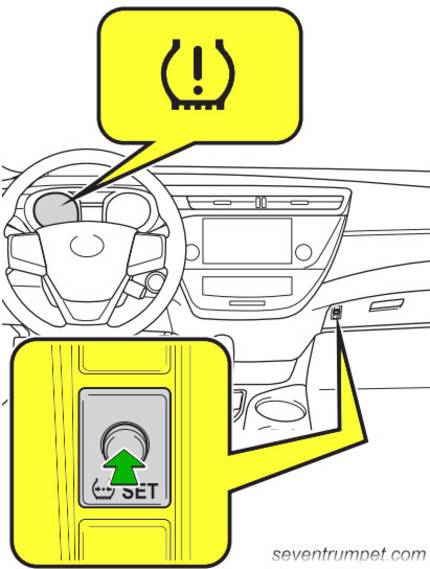2007-2024 Toyota Camry Tire Pressure Light Reset Guide: Troubleshooting Made Easy!
Last Updated on November 15, 2024 by Nick
The tire pressure light, also known as the Tire Pressure Monitoring System (TPMS) warning light, is an essential feature in modern vehicles like the 2007-2024 Toyota Camry. This light alerts drivers when one or more tires are underinflated, potentially affecting vehicle safety and performance. Understanding why this light comes on and how to reset it is critical for maintaining your vehicle in optimal condition.
Proper tire pressure ensures safe handling, fuel efficiency, and longer tire life. In this guide, we’ll explore the reasons behind the tire pressure light, how the TPMS system works, and step-by-step instructions to reset the tire pressure light in your Toyota Camry, covering models from 2007 to 2024.
Table of Contents
Common Reasons for Tire Pressure Light
- Low Tire Pressure: The most common reason for the tire pressure light is one or more tires being underinflated. Tires naturally lose air over time, so it’s essential to check them regularly.
- Temperature Changes: Tire pressure fluctuates with temperature. Cold weather can cause tires to lose pressure, which may trigger the TPMS warning light.
- Tire Damage: A puncture or slow leak may cause a gradual loss of air, leading to a drop in tire pressure.
- Sensor Issues: Sometimes the TPMS sensor itself may malfunction, causing the light to turn on even if the tire pressure is correct.
2007-2017 Toyota Camry Tire Pressure Light Reset Guide
Time needed: 7 minutes
This is the sixth and seventh generation of the Toyota Camry. In this generation, your vehicle will be equipped with a TPMS reset button. Follow these steps to do it:
- Stop the vehicle and turn off the engine
Tire pressure reset process cannot be done while the vehicle is moving.
- Adjust the cold tire pressure in all four tires recommended on the tire placard
The tire placard located on the door panel
- Turn the ignition key to the “ON” position without starting the engine
If your vehicle has an ignition button, press the POWER button twice without touching the brake pedal
- Look for the TPMS reset button and press the button until the tire pressure indicator Blinks slowly three times.
Each model year has a different button location. On older models, the TPMS button is located in the glove box.

- Wait for several minutes with the engine switch in the “ON” position, to allow the system to record each tire’s pressure, then turn the engine off.
Done!
Resetting the Tire Pressure Light in the 2018-2024 Toyota Camry
Unlike the previous model year. On this latest model, you have to enter the menu to reset the TPWS. Follow these steps to do it:
- Stop the vehicle and adjust the tire inflation pressure recommended on the tire placard
- Start the engine
- Go to the GEAR menu by using the ◄ ► navigation button
- Select the VEHICLE SETTINGS menu and then press and hold the OK button

- Select TPWS
- Select SET PRESSURE
- Press and hold the OK button until the TPMS indicator blinks 3 times
- Run and drive your car
TPMS calibration process will complete after 30 minutes driving between 25 mph (40 km/h).
Conclusion
The tire pressure light is more than just a nuisance—it’s a vital tool for ensuring your Toyota Camry’s tires are in good shape. By following the steps outlined in this guide, you can reset the light and maintain optimal tire pressure, ensuring a safer and smoother ride.
So that’s all you have to do: Camry Tire Light Reset. This procedure should apply to the sixth, seventh, and eighth generations of the Toyota Camry (2007, 2008, 2009, 2010, 2011, 2012, 2013, 2014, 2015, 2016, 2017, 2018, 2019, 2020, 2021, 2022, 2023, 2024 model years). Hopefully, the article 2007-2021 Toyota Camry Tire Pressure System TPMS Light Reset Guide can solve your problem. Good Luck!
FAQs – Toyota Camry Tire Light
Ignoring the light can lead to unsafe driving conditions and reduced fuel efficiency.
It’s best to address the issue immediately to avoid tire damage or potential accidents.
Cold weather causes tire pressure to drop, which can trigger the TPMS warning.
No, resetting the light without fixing the underlying issue (low tire pressure) won’t solve the problem.
TPMS sensors generally last about 5-10 years, but they should be checked if issues arise.